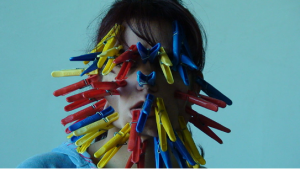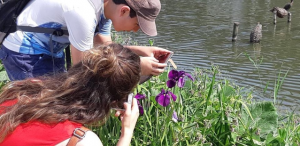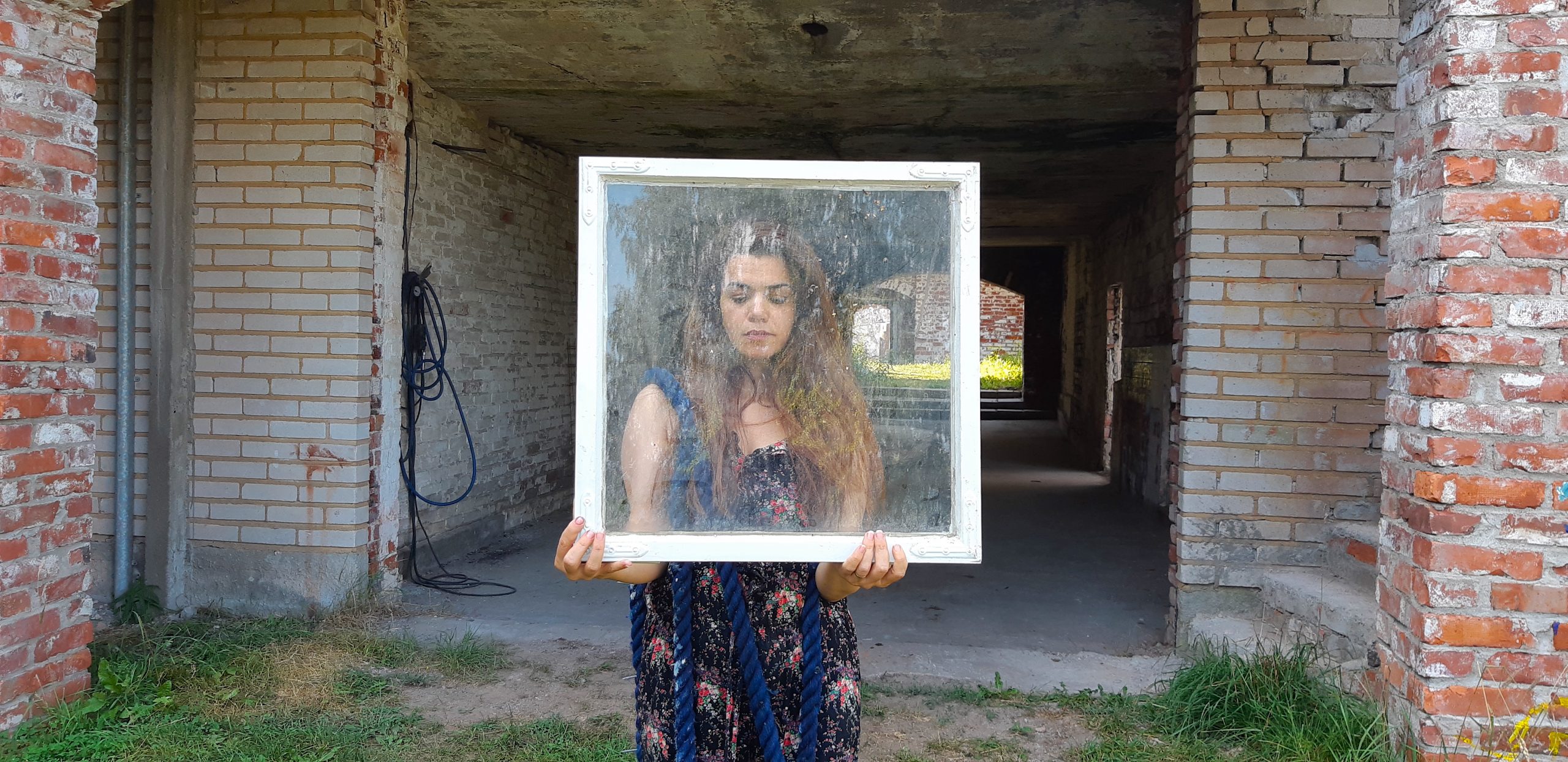5,576 Total views, 2 Views today
By Fiona Crouch
I start this review with a confession: I struggle to understand performance art. My suspicious, educated mind constantly battles with my senses, distrusting their ability to make meaning of what is being performed in front of me without overthinking and overanalysing. This is a curse of the Anthropocene – the need to dominate and extend mastery over everything, even my own interpretation of an artist performing in front of me. I catch myself over my use of the term mastery – a masculine loaded term that implies women’s supposed inferior status to men. And this is the nub of humankind’s failure – the desire, even need, to control, make slaves of others and our world. It is highly likely to be our downfall.
These are concepts that Avan Omar explores in her artwork. Her biography on the Dutch Art Institute specifies that much of Avan’s work ‘is concerned with issues of gender, culture and ecology’ (Dutch Art Institute, no date): issues that dominate today’s global discourse. In her 2017 Maelstrom Slow Dance performance at the Dutch Art Institute, Avan states that ‘we are more than our bodies’. The human body, her own body, is Avan’s starting point as an artist, with her performance. She asks that her work is ‘interpreted as a description of the body, as a commentary on culture generally and on gender particularly.’ Her physicality is the language she uses to convey her creative message. Simply put, everything begins with our internal self, represented, and bound by the physical borders of our body, and radiates outwards like a laser beam, highlighting the changes that need to be made in our communities, both locally and globally.
This need for change at individual and societal levels is epitomised by her performance in Clothespins (2008). In this recorded piece, Avan places clothes pegs on her face, one at a time, until her face is covered, obscured by symbols of domestic servitude. 
I wince as I watch, physical pain stops me from overthinking, making her message inescapable. Her aim was ‘to show gender roles of women and how the daily routines in the life of a woman and woman’s work become torture’ (Omar, 2016). Avan is placing the pegs on herself: is this a call to arms for the sisterhood to rise and break off the shackles of domestic drudgery? As women, are we perpetuating the pain in some way by continuing with the chores? The use of modern, cheap plastic clothes pegs, known as clothespins in the United States, as Avan’s instrument of pain is interesting. They are instantly recognisable to all audiences – a hint towards globalisation – and the plastic used in their manufacture is harmful to the environment; therefore, contributing to the destruction of delicate ecological systems, as well as acting as a symbol of female subjugation. There are sinister realities hidden in plain sight behind the jolly bright colours.
The map is not the territory (2016) brings together the strands of culture and identity. It was part of a wider exhibition emphasising the transmission of cultures and the realities of this process. Avan’s contribution focused on ’identity and the border of an individual among others’; it was a study of individuality, conformity and acceptance. As a Kurdish woman who has lived and worked in Europe and South Kurdistan, Avan’s lived experiences reveal the reality of living between cultures and the impact this has on a person’s sense of self and the wider connections they form to other people and places. With a nod towards Aristotle, in The map is not the territory, Avan emphasises how an individual is always more than just the space they physically occupy. To extend this to its logical conclusion, a people are always more than the land they are allowed to inhabit: Kurdish people and Kurdistan are much more than the borders that currently constrain them.
Unfortunately, for many immigrants and refugees, finding a physical space in which they are welcome for who they are, with no expectation to assimilate and subordinate to their host culture, can be challenging. The sense of otherness experienced by immigrants and refugees is a regular feature of Avan’s work. Her 2015 piece Is otherness a trap? considered the relationship between power and identity within existing social and political structures. These were notions investigated by Avan in her MA thesis, titled Performing Stereotype, ‘race and ethnicity still play a significant role in the process of defining cultures and identities’, resulting in ‘the performance of stereotypes in daily life and the ambivalent desire for integration versus individualisation in relation to societal group identity.’ Inherent within Avan’s exposition are the dangers of ongoing power struggles and socio-political imbalances. Avan sees how a person’s identity is often subordinated to that of the group they are perceived as belonging to. This group identity is privileged over who they are or want to be. Marginalised groups, such as immigrants and refugees, often struggle to find their place within their new communities as they are regarded through lenses that bracket together multiple people; creating ill-informed biases and lingering misinformation.
For me, this makes collaborative initiatives like the Erfgoed project important. Avan was involved with the project as the artist in residence (March to September 2018) at the Center for Ecological (Un)learning (CEU) based in the Netherlands. The project connected artists from The Outsiders Union and the Casco Art Institute to transform and open an old farmhouse in Utrecht’s Leidsche Rijn area for community use and as an exhibition space. The first stage involved uncovering and exploring the farm’s past as a single site, but also its place within the local area; thus, acting metaphorically for the multiplicity of narratives that surround multicultural communities. Historically the farm’s produce fed the residents of Leidsche Rijn, but now the former farmland is a shopping mall and train station. Fundamental to the Erfgoed project was questioning future sustainability for Western Europe’s urban and industrialised societies. Avan used her participation in the project to raise awareness of the ecological issues that threaten humankind. Crucially, the Erfgoed project brought together disparate groups to form a new Leidsche Rijn community. This video shows the success of the project, both artistically and as a collaborative endeavour.
We face unprecedented threats – war and impending climate catastrophe – scramble to the top of an extensive list of destructive human activities that imperil planet and people. These can only be overcome by working together – using differences of gender, age, and culture – not divide us but to use different perspectives and experiences to develop ways of overcoming the challenges that will overwhelm humankind unless action is taken. Nelson Mandela succinctly captured this sentiment in a speech he gave upon receiving the Franklin D. Roosevelt Four Freedoms Award in 2002: ‘Our differences are our strength as a species and as a world community’. Activist artists, like Avan Omar, are vital in spreading the message in a language that is accessible to all, that transcends language barriers, religious divisions, and geographical borders. Avan, more power to your elbow!

References
Dutch Art Institute. (No date). DAI Roaming Academy. Available at: https://dutchartinstitute.eu/ [accessed 15 February 2023].
Omar, A. (2016). Avan Omar. Available at: https://avanomar.com/index.html [accessed 15 February 2023].

